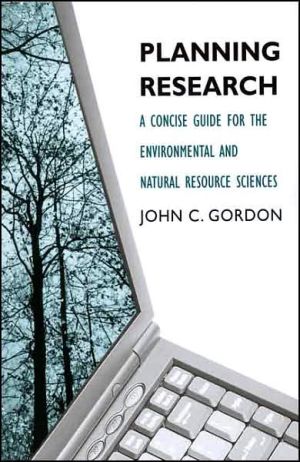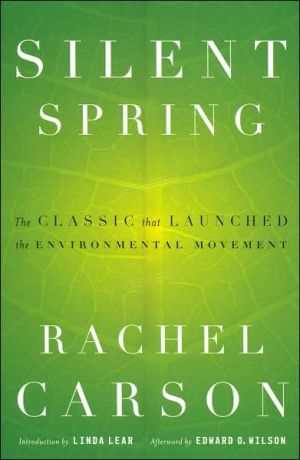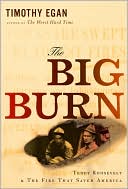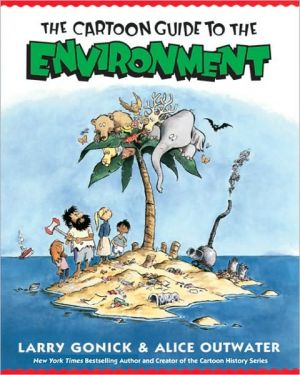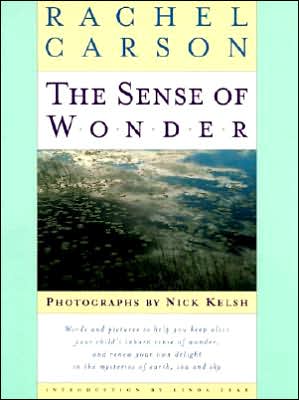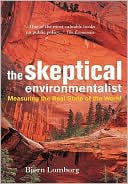Planning Research: A Concise Guide for the Environmental and Natural Resource Sciences
This concise yet comprehensive guide describes in detail a successful method for planning and writing about proposed research and management projects. Intended for use by a wide variety of individuals in life sciences and environmental sciences and management, the volume offers indispensable, step-by-step advice for any student or professional undertaking a research project.\ \ John C. Gordon focuses first on the importance of thinking carefully and writing down a research plan,...
Search in google:
This concise yet comprehensive guide describes in detail a successful method for planning and writing about proposed research and management projects. Intended for use by a wide variety of individuals in life sciences and environmental sciences and management, the volume offers indispensable, step-by-step advice for any student or professional undertaking a research project. John C. Gordon focuses first on the importance of thinking carefully and writing down a research plan, describing each component of such a plan and explaining why it is important. In subsequent chapters he shows how to describe research or management problems, how to write clear objectives, the importance of the hypothesis, how to deal with schedules and budgets, how to communicate completed plans, and how to prepare grant applications. Gordon concludes with an insightful chapter on the social significance of scientific research.
PLANNING RESEARCH\ A CONCISE GUIDE FOR THE ENVIRONMENTAL AND NATURAL RESOURCE SCIENCES \ \ By John C. Gordon \ Yale University Press\ Copyright © 2007 Yale University\ All right reserved.\ ISBN: 978-0-300-12006-6 \ \ \ Chapter One\ The Importance of Written Plans \ In the current science environment, money and permission to do a specific piece of research depend absolutely on the quality of a written document explaining what research is to be done and why. This is true regardless of the discipline, location, or size of a scientific project. It has been fashionable to debate whether written plans for research are simply bureaucratic impediments to real science. For some exceptional individuals this may be true. For most, however, two compelling reasons for doing written plans remain. First, the system requires them, and, more important, thinking, especially thinking before doing, is the key to good research.\ WHY WRITE STUDY PLANS?\ Science, as a rigorous form of honesty, is a difficult pursuit. We like to be right, but science proceeds only by proving things wrong. To quote my doctoral adviser, Walter Loomis (personal communication), "Science is what can be proven wrong (if it is wrong); philosophy is what you can only argue about." Good science usually demands long preparation, repetition of difficult or boringmeasurements over long periods of time, ruthless discard of failed ideas, and an exhausting struggle to bring results to publication. Perhaps the most daunting aspect of a scientific career is that most or all of it usually will be taken up doing what Thomas Kuhn (1970) called "normal science"; that is, producing those small advances that together eventually bring important new understanding. The giants of science are few, but those who contribute research to the creation of giant insights are very many.\ The quality of the research done by the many is a critical determinant of the rate of scientific advance and of the quality of the eventual giant insights. Quality control over scientific research is maintained through careful planning and review of proposed research efforts. Researchers thus use written study plans to carefully describe what they propose doing and, particularly, why. In the absence of a written plan, determining the "why" is particularly difficult. But, as Gordon's second law of science says, a research project not worth doing at all, is not worth doing well. Only by explaining the "why" of a research project can the skeptical be convinced that a study is worth doing. This is especially important for research that is to be the basis for a dissertation or a thesis. Often, the thesis problem is a piece of a larger problem hierarchy that addresses an aspect of theory or practice of great importance. The learning researcher must be able to demonstrate how his or her study links up to this larger research question, the question that will specify the observations and theories that frame and underpin the thesis problem. The researcher will use these observations and theories to generate the study's research objective and hypotheses (see Chapters 4 and 5). This thought process is also necessary to make the student more than a "pair of hands" and a full participant in the larger world of science.\ Each piece of the larger problem is subject to a progression from abstract idea to concrete, written research product. In this progression, the initial idea is transformed into a written study plan, for the reasons given below. The study plan then metamorphoses over the course of the research into written manuscript to be judged by the researcher's peers. These "pieces," as they are produced and judged sound, are continually woven into the ever-changing whole that is the answer to the overarching question and its place in the theoretical and operational body of science.\ Those engaged in research on environmental and natural resource topics have an additional burden. Humans have a tendency to draw a boundary between "us" and "the natural world," and this greatly affects how people think about "the environment." For the environmental researcher it means that there is a double uncertainty principle. The researcher has, of course, to confront her own potential influence on the system to be studied, which may be a key, or rare, component of the environment itself. But the environmental scientist must also be specifically aware of the probable influence of humanity at large. All earthly natural systems are probably affected by human activity either on purpose or in collateral ways.\ Environmental problems, issues that arise out of concern for environmental values and are thus often the object of environmental research, are especially difficult to solve. Environmental and natural resource sciences are quite young, and the problems they address tend to have a weak and scattered science base, take long times to solve, and involve a daunting array of disciplines. They also are frequently the subject of controversy and conflicting opinions based on differing human values (Gordon and Berry 1993). Although the basic methods of scientific thought and action are reasonably universal across problems and disciplines, planning environmental research often requires special emphasis on problem selection and definition, setting specific and achievable objectives, and planning for long-term, logistically difficult field activities. Thus, these topics receive special emphasis here.\ There are many reasons for doing written study plans. All of them apply with special force to environmental research. Writing a plan helps you to do the following important things:\ 1. Think as carefully and thoroughly as possible before doing. Science resources are scarce. Most research projects are expensive in human time, equipment, and supplies. Research funders expect these resources to be spent wisely and to find reviewed plans reassuring.\ 2. Get help. A written plan can be reviewed by people outside your immediate environment. With e-mail, reviewers can come from virtually anywhere. Few research projects are so well conceived initially that they can't be improved with expert advice.\ 3. Get money. Most research is funded on the basis of written plans, or "proposals." The ability to write clear plans is the most important skill to use to get money to do research.\ 4. Provide for continuity. Your research is important or it wouldn't be happening. Thus, it is important to carry it through to a usable result, if at all possible. Many environmental and natural resource research projects take place over extremely long periods of time. The originating scientist may not be the one that finishes. A sound written plan will ensure a useful ending. But continuity is important even if the same researcher stays the course. Inevitably, minds and methods change during the course of a research effort. A written plan will reveal what changed, and when, and what the changes mean from the retrospective view from the results. It is important to read your plan periodically and note changes in writing. One technique is to use a "track changes" editing program on a word processor and ask the initial reviewers to look over changes periodically during the course of the research.\ 5. Provide for coordination. Written plans provide the means for making sure research projects on similar topics and problems fit together as well as possible. If written plans are created and widely shared, they also could lead to interdisciplinary research on problems that don't seem to fit together at all, at first. Shared hypotheses and methods could be made to fit together better and to lead more directly to giant insights.\ THE INTENDED AUDIENCE AND GOAL\ This book is the result of a course in research methods that I have taught for thirty years to graduate students in three different universities. This book is intended for students who are at the beginning of a research career or for those who will use research results in professional practice. It may also be useful to established researchers who want a refresher course on research planning and its underlying philosophy.\ This book will help you to:\ Prepare complete study plans and grant proposals;\ Explain several views of how and why science works;\ Recognize the major conceptual limitations of scientific research;\ Constructively criticize study plans;\ Communicate research plans to specific audiences;\ Outline the structure of environmental and natural resource research;\ Think creatively about science as a human activity.\ The core method used to approach this ambitious list is the stepwise preparation of a written study plan.\ USING THIS BOOK\ This book is intended as a text to be used with the cited readings for a one-semester graduate course on research planning for students in environmental and natural resource curricula. The goal of the book is to give practical help in planning and doing research, and in using its results. In the course, students prepare a real study plan in addition to the presentation, reading, and discussion of the text and other assigned readings. The plan is prepared in pieces, with each piece reviewed by the instructor, and each student presents a plan orally to the class at the end of the term. If you are reading the book outside the discipline of a scheduled class, you will probably gain the most from it if you attempt to prepare a plan while reading the book. It also helps to discuss the plan pieces with others as you create them.\ The first two chapters of the book present a scientific framework for written study plans, with a brief overview of the philosophy, sociology, and history of science. These chapters attempt to draw practical lessons from these disciplines for those actually planning and doing research. The hypothetico-deductive approach to science is emphasized, as is the utility of an adaptive management and research approach to many environmental and natural resource problems.\ The next five chapters discuss in detail the components of written study plans and methods for reviewing and presenting them. These chapters together cover the contents to be expected in any competent written study plan in the order they are listed below.\ The final chapter discusses the impact of planned research on professional practice and public policy. Enlarging the general fund of human knowledge is not the only contribution environmental and natural resource research is expected to make. The final test of the efficacy of research planning is the positive effect the results have on activities in the field, on profit and loss, and on the creation of effective laws and administrative rules.\ STUDY PLAN CONTENTS\ A good study plan will include all the elements listed below, and will be concise. A good study plan will also follow the format that will be most helpful in accomplishing its purpose. It may be in the form prescribed by a granting agency or an employer. The format most acceptable in the disciplinary culture may be used. But a good plan will contain all the elements listed, regardless of their arrangement or specific title.\ A title concisely conveys the content and intent of the plan.\ 1. The author's name, affiliation, and contact information, along with the date and number of the draft (if it is such).\ 2. An abstract that is not more than 3 percent of the length of the whole plan.\ 3. A summary statement of the research problem that says clearly why the research is being done, and who will care about the result and why.\ 4. A statement of the objective of the proposed research, with criteria by which completion and success can be judged. 5. Hypotheses that are testable.\ 6. A list of variables and sources of variation that bear on the objective and hypotheses.\ 7. The study design and intended methods of analysis.\ 8. Field, laboratory, and computational procedures to be employed and why.\ 9. A list of intended products, including reports, publications, and constructions.\ 10. A budget for the life of the project, presented so that sources and uses of funding are clear.\ 11. A schedule of the activities needed to complete the project.\ 12. Literature cited in the body of the plan.\ 13. Appendixes such as detailed methods, literature reviews, maps, and supporting information generally.\ I discuss each of these written plan elements in a later chapter. The important point is that a complete plan contains all of them, with no exceptions. Even if the chosen plan format doesn't specify them all, they should be included at least in the author's version, because the primary audience for any plan is the author herself. Including all of the elements causes the author to think about them together, carefully, before embarking on other research activities. Without this reality check, it is much easier to be overly optimistic about anything from hypotheses to budgets. Most of all, answering the "why and who cares" questions reassures the author that this is not a project "not worth doing at all." Here is a complete study plan outline:\ A Study Plan Outline.\ I. Title\ II. Author and Date of Draft, Author Contact Information\ III. Abstract (3 percent of total plan length)\ IV. Problem Statement\ A. Summary of relevant literature (a lengthy literature review and synthesis can be presented in an appendix)\ B. Context of the research (geographic, institutional)\ C. Problem definition, five elements or "gap in knowledge" D. Projected outcomes and findings\ E. Relationship to other studies; cooperation\ F. Summary of costs and benefits\ V. Statement of Question, Objectives, and Hypotheses\ A. Overarching research question, derived from problem statement B. Intended outcome of this piece of research (usually to test hypotheses and define relationships), including an estimate of time and resources needed\ C. Specific mechanistic hypotheses, tests in summary, populations to which the hypotheses are to be applied\ VI. Methods\ A. List of variables and sources of variation, sorted by independent and dependent variables, with reasons for their selection\ B. Other sources of variation and how they will be dealt with C. Study design and analysis, including models, statistical tests if used, detailed analytical procedures, graphs of potential outcomes D. Field, laboratory, and computational procedures, in sufficient detail so that someone other than the author could do the study\ VII. Budget and Schedule\ A. A comprehensive three-column budget for the duration of the Study\ B. A schedule of tasks with initiation and completion target dates, with designated responsibilities and reporting requirements and dates\ VIII. Reports and Publications\ A. Intended disposition of research results, in terms of audience, publication type, and timing\ B. Fiscal, accounting, and procedural reporting requirements and how they will be met\ IX. Literature Cited and Appendixes\ (Continues...)\ \ \ \ \ Excerpted from PLANNING RESEARCH by John C. Gordon Copyright © 2007 by Yale University. Excerpted by permission.\ All rights reserved. No part of this excerpt may be reproduced or reprinted without permission in writing from the publisher.\ Excerpts are provided by Dial-A-Book Inc. solely for the personal use of visitors to this web site. \ \
Contents Preface....................viiOne The Importance of Written Plans....................1Two Scientific Method....................10Three Useful Views of Science....................20Four Stating Problems and Objectives Clearly....................32Five Creating Hypotheses and Models....................44Six Designing Experiments....................53Seven Communicating Study Plans....................68Eight Understanding the Role of Science....................81References....................91Index....................95
